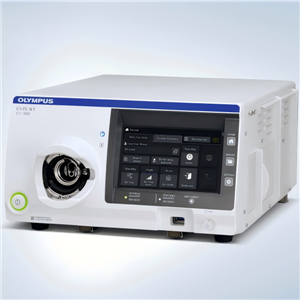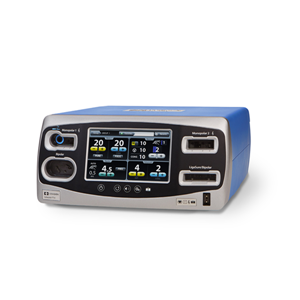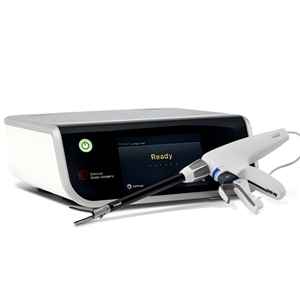laparoscopic surgery
Abstract
Laparoscopic surgery has been widely adopted and new technical innovation, procedures and evidence based knowledge are persistently emerging. This review documents recent major advancements in laparoscopic surgery. A PubMed search was made in order to identify recent advances in this field. We reviewed the recent data on randomized trials in this field as well as papers of systematic review. Laparoscopic cholecystectomy is the most frequently performed procedure, followed by laparoscopic bariatric surgery. Although bile duct injuries are relatively uncommon (0.15%–0.6%), intraoperative cholangiography still plays a role in reducing the cost of litigation. Laparoscopic bariatric surgery is the most commonly performed laparoscopic gastrointestinal surgery in the USA, and laparoscopic Nissen fundoplication is the treatment of choice for intractable gastroesophageal reflux disease. Recent randomized trials have demonstrated that laparoscopic gastric and colorectal cancer resection are safe and oncologically correct procedures. Laparoscopic surgery has also been widely developed in hepatic, pancreatic, gynecological and urological surgery. Recently, SILS and robotic surgery have penetrated all specialties of abdominal surgery. However, evidence-based medicine has failed to show major advantages in SILS, and the disadvantage of robotic surgery is the high costs related to purchase and maintenance of technology. Laparoscopic surgery has become well developed in recent decades and is the choice of treatment in abdominal surgery. Recently developed SILS techniques and robotic surgery are promising but their benefits remain to be determined.
Introduction
Since the first laparoscopic cholecystectomy (LC) was performed by Philippe Mouret in 1987 , laparoscopy has brought about a tremendous revolution in abdominal surgery. Advances in technology and increased experience have revolutionized the management of conditions requiring surgery, both elective and emergent . Recently, many trials have demonstrated similar patient-oriented and oncologic outcomes for laparoscopic cancer surgery as for open surgery. Meanwhile, SILS and robotic technology have gradually entered this field. However, there is still a lack of comprehensive evidence to guide surgeons and patients in advanced laparoscopic surgery. Therefore, we have summarized the available randomized controlled trials (RCT) and review articles on surgical topics related to laparoscopic surgery from the past decade. This review will allow laparoscopic surgeons to develop their skills, as well as future RCT, on a strong foundation of information.
Physiology and Comparison with Open Surgery
In a randomized trial comparing open and laparoscopic Roux-en-Y gastric bypass (LRYGB), Nguyen et al. performed extensive studies on the physiology changes during laparoscopic surgery . Indeed, they confirmed that LRYGB reduced hospital stay, decreased recovery time, decreased the number of abdominal wall injuries and reduced operative time; also, the found that there no significant weight loss during (up to) 3 years of follow-up evaluation . However, some adverse effects have been found, including laparoscopic gastric bypass resulting in decreased intraoperative urine output , transient postoperative elevation of liver enzymes , and decreased femoral venous flow . These biologic changes may have resulted from intra-abdominal hypertension caused by pneumoperitoneum, which may influence respiratory and abdominal organ function . These findings highlight the importance of avoiding prolonged operative time in older, more obese patients and in patients with unstable hemodynamic or chronic kidney disease.
The laparoscopic surgery's advantages over open surgery have also been confirmed in different fields, such as perforated peptic ulcer , distal pancreatectomy and hepatectomy . An additional benefit of laparoscopic surgery is the decreased risk of postoperative venous thromboembolism , In colorectal surgery, the venous thromboembolism rate in open surgery was significantly higher than in laparoscopic surgery (2.9% vs 1.2%, P < 0.001) 19. The reduction is believed to be the result of early mobilization after laparoscopic surgery. Additionally, while warmed carbon dioxide pneumoperitoneum was found to have no advantage ,intraoperative administration of local anesthesia was found to reduce postoperative pain .
Laparoscopic cholecystectomy
LC is the most common laparoscopic surgery performed by general surgeons . LC can now be performed on emergency and concomitant common bile duct stones . Different management approaches for concomitant gallbladder stones and common bile duct stones may seem equivalent, but one-stage management may provide a shorter hospital stay . However, the incidence of bile duct injury remained slightly higher than in open surgery (approximately one per 200 procedures in LC vs one per 500 cases in open surgery) . Despite this fact, LC remains the treatment of choice because it offers less postoperative pain, shorter hospital stay, better cosmesis and increased patient satisfaction . Although the incidence of bile duct injury in LC is very low (0.15%–0.6%), intraoperative cholangiography still plays a role in reducing the cost of litigation .
Laparoscopic Bariatric Surgery
Laparoscopic bariatric surgery has become one of the most commonly performed abdominal surgeries. In the USA, laparoscopic gastric bypass is the second most common procedure (after LC) performed by general surgeon . Many randomized trials have proven the superiority of laparoscopic over open bariatric surgery in reducing the impairment of postoperative pulmonary function, intraoperative blood loss, hospital stay, wound infection and incisional hernia rate, as well as providing a quick return to work . Laparoscopic gastric banding and gastric bypass are currently the two most commonly performed bariatric surgeries , and, , and technological improvements have dramatically improved the safety of the latter , Two randomized trials have reported that laparoscopic gastric bypass yielded significantly greater weight loss 5 years postoperatively than laparoscopic gastric banding, but it is associated with a longer operative time and more perioperative complications . For more complicated laparoscopic bariatric procedures, Søvik et al. concluded that laparoscopic duodenal switch surgery was associated with greater weight loss than laparoscopic gastric bypass, as well as with a greater risk of nutrition deficiency . Another new bariatric surgery, laparoscopic sleeve gastrectomy (LSG), has been adopted as one of the primary forms of bariatric surgery at an astonishing rate . Two recent RCT compared the effectiveness of LRYGB and LSG . Although Peterli et al. reported similar weight loss with LRYGB and LSG at 3 months , Karamanakos et al. . These results coincide with the increasing trend toward LSG as the premiere bariatric surgical procedure . LSG is now the most commonly performed bariatric surgery in many Asian countries because of its efficacy and reduced risk in gastric cancer detection . However, a recent randomized trial has highlighted the superiority of laparoscopic gastric bypass over LSG in the treatment of diabetes .
Laparoscopic Anti-Reflux Surgery
Since the first case 20 years ago, laparoscopic Nissen fundoplication has become the gold standard in anti-reflux surgery for intractable gastroesophageal reflux disease . It is estimated that nearly 24 000 anti-reflux surgeries were performed in the USA in 2003 . Although meta-analysis concluded that partial fundoplication resulted in fewer reoperations and better functional outcomes , long-term retrospective studies have favored the Nissen fundoplication because it offers superior reflux control than the partial fundoplication . Other meta-analysis also demonstrated that clinical outcomes following laparoscopic Nissen fundoplication appear to be similar regardless of whether the short gastric vessels are divided . However, with the introduction of new energy sources, dividing the short gastric vessels is still recommended for mobilizing the fundus and reducing fundus tension . Unfortunately, between 2.8% and 4.4% of patients undergoing laparoscopic fundoplication may have recurrent disease and require revision surgery. Laparoscopic revision anti-reflux surgery can be an effective option, though it is technically challenging .
Laparoscopic Heller myotomy has become the treatment of choice for achalasia because of its high success rate . Dor anterior fundoplication following laparoscopic Hellar myotomy provides adequate prevention of regurgitation symptoms, similar to patients who underwent Toupet fundoplication .
Laparoscopic Gastric Cancer Resection
Laparoscopic gastrectomy for gastric cancer was first introduced by Kitano et al. in 1991, and it has since become one of the standard treatments for early stage gastric cancer as well as for palliative treatment , . Randomized trials have confirmed the advantages of laparoscopic gastric cancer resection over open surgery, including shorter hospital stay, reduced postoperative pain, and better postoperative quality of life . According to a recent survey, laparoscopic assistant distal gastrectomy with extracorporeal anastomosis is the most common procedure performed in Korea and Japan .
Totally laparoscopic gastric cancer resection is feasible but technically more demanding .
Laparoscopic Surgery of the Colon and Rectum
Since the first reported laparoscopic surgery for colorectal cancer in 1991, the laparoscopic approach is now routinely applied to a wide range of colonic diseases and is an accepted technique for cancer resection . Several large RCT have been published that support the laparoscopic approach's short-term benefits for colon cancer resection and non-inferiority in oncological outcomes . However, the benefits are not as dramatic as expected, and the benefits are also less certain for rectal cancer resections; further data are pending . Although it does not affect surgical safety or oncological security, laparoscopic colorectal surgery is associated with a higher intraoperative complication rate than open surgery , and obese patients can face increased risk . These findings highlight the importance of training less experienced surgeons and shorting the learning curve for advanced laparoscopic surgeries .
Recently, NOTES has been employed in colorectal surgery, enabling the use of orifices, such as the vagina, for specimen extraction . Another technical refinement has been the application of SILS laparoscopic colectomy . Robot-assisted laparoscopic surgery of the colon and rectum is also an emerging technology; it offers increased dexterity, improved operative view and optimal ergonomics . Further studies are required to evaluate the oncologic and patient-oriented outcomes of these new technologies.
Laparoscopic Pancreatic Surgery
Recent advances in technology and techniques have allowed laparoscopic surgery to be applied in cases involving various pancreatic diseases . Laparoscopic distal pancreatic resection, first reported by Gagner in 1996, has gained wide acceptance because of its technical ease and lack of anastomsis .
Laparoscopic Hepatic Surgery
Since the first reported laparoscopic liver resection by Gagner et al. in 1992, laparoscopic hepatic resection has been slow to popularize because of its technical difficulties. With recent improvements in laparoscopic techniques and equipment, laparoscopic liver resection has been reported to be superior to the open surgery in terms of perioperative results. Also, it does not compromise the oncological outcomes. However, laparoscopic hepatic surgery remains to be established as a safe and effective alternative to open liver resection and for hepatocellular carcinoma . A recent meta-analysis has found that a combination of laparoscopic surgery and radiofrequency ablation for the treatment of colorectal liver metastasis may improve the outcome of open radiofrequency ablation and is superior to hepatic resection at 5-year survival .
SILS
With the success of laparoscopy in abdominal surgery during the past decade, one of the more recent advances in the field requires only one entry point, typically in the umbilical site. SILS has been described in the literature using a number of terms including single-incision laparoscopic surgery (SILS), single-port laparoscopic surgery, single-port access surgery, and transumbilical or laparoendoscopic single-site surgery . There is increasing interest in SILS both as an alternative to traditional laparoscopy and as an adjunct to robotic surgery. Almost every type of laparoscopic abdominal surgery using the single-site approach has been reported, and the comparative data have established the safety of SILS in every surgical specialty, including gynecologic and urologic surgery . Reduction in the number of ports has been reported to offer several benefits compared conventional laparoscopic surgery, including improved cosmetic results, reduced pain, reduced time to recovery and shortened hospital stay. Other potential benefits are related to reduced port-associated complications, such as hernias, vascular and soft-tissue traumatic injuries during trocar insertion, and nerve injuries. However, most of the reported series involved level IV evidence 86. Level I and II clinical data on the benefits of SILS surgery are lacking . Some recent randomized trials in many surgical fields have failed to detect significant benefits to SILS other than cosmesis . This reminds us of the story of mini-laparoscopic surgery in the past decade. Although we can achieve an almost scarless minimally invasive surgery using mini-laparoscopic surgery, further randomized trials failed to detect any benefit to this procedure . The enthusiasm for mini-laparoscopic surgery eventually faded away. Therefore, the future of SILS remains to be determined.
Robotic Surgery
A surgical robot is a computer-controlled system that may assist a surgeon in using and manipulating surgical instruments. The surgical robot was initially planned to enable remote control (telesurgery) , but now it is used in the operating theater to facilitate laparoscopic surgery. Since the first robotic surgical system was approved in the USA in 2000, the surgical robot system has been widely adopted in almost every field of laparoscopic abdominal surgery. It has been estimated that 1395 robotic systems have been installed worldwide, with 1028 in the USA and 248 in Europe . The benefits of robotic technology include the improved orientation and dexterity, especially when a procedure requires suturing in small spaces or facilitating ergonomic instruments at angles. For a long time, prostatectomy was the most common robotic procedure. In 2009 alone, approximately 90 000 robot-assisted laparoscopic prostatectomies were performed, compared to 50 000 in 2007 . However, robotic hysterectomy outnumbered robotic prostatectomy in 2010 by more than 100 000 cases . These two procedures are the two major robotic surgeries, and cases outnumber all other robotic procedures combined .
For both prostatectomy and hysterectomy, the robotic approach has proven to be better than open surgery because it offers reduced blood loss, less postoperative pain, better cosmesis and a faster return to physical activity. However, the robotic approach has not been proved to have clear benefits over the laparoscopic approach in abdominal surgery. Most studies have shown some significant drawbacks to the robotic approach, specifically increased operative time, higher cost and reduced flexibility . However, there are some potential advantages, such as improved survival, better quality of life and lower long-term costs. For example, robotic prostatectomy may offer improved continence and potency . Also, further advances in technology may decrease the cost of robots and increase the application in SILS or NOTES. Another potential advantage is the reportedly shorter learning curve for the robotic approach compared to that for “pure” laparoscopic surgery.
Although most analysis has shown that robotic surgery is not cost-effective, this does not appear to have affected utilization, which has increased yearly. The future of robotic surgery is promising, but how changes in the health-care climate will impact use of robotics has yet to be determined.
Conclusion
Since the first LC was performed 25 years ago, laparoscopic surgery has become the procedure of choice for almost every type of abdominal surgery, and hundred thousands of scientific articles have been published on the topic. Level I evidence indicating laparoscopic surgery superiority over the open alternative has been provided for a variety of procedures including in fundoplication for gastroesophageal reflux disease, bariatric surgery for morbid obesity, and colorectal surgery. Recently, advanced laparoscopic surgery has also been extended to hepatectomy, pancreatectomy, urology and gynecology. However, caution should be taken in patients who risk increased abdominal pressure during laparoscopic surgery. Recently developed SILS and robotic technologies are favorable, but further studies are required to evaluate its advantages.




